بیا به نمایشگاه
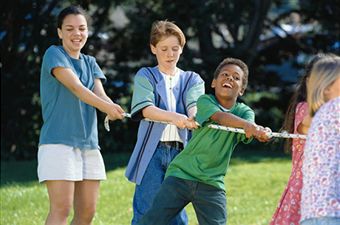
Come to the Fair
Fall fairs have been a feature of North American life since early in the nineteenth century. At the end of the harvest, people from rural areas have come together to celebrate. Usually, these fairs take the form of a competition regarding the best of all farm products of that year. Depending on the part of the country, and its most important crop, fall fairs can begin as early as August or as late as November. They usually last several days.
When the United States and Canada were organized, they were divided into small units called counties. Larger units were called states or provinces. Many of the best-known
fairs are county fairs or state fairs. There are also smaller local fairs, and larger ones too, like the Canadian National Exhibition in Toronto, Ontario.
Since these fairs are usually annual events, many have developed permanent buildings over the years. Most of these are large barn-like structures. These buildings are used to display new products for farm life, such as tractors, home furnishings and water systems.
Several barns are usually necessary to house all the horses, cows, pigs, goats, sheep, chickens and other animals in competition. There must also be room to display all the vegetables, berries and fruits in competition. Finally, there is space for handicrafts, artwork, baked goods, and jams and jellies.
Usually, there is a grandstand, which is a stage with wooden seats around it. Here entertainers perform for an audience during the fair. Country and western singers are usually popular at fairs, but so are comedians, clowns, dancers and musicians. There may also be other contests such as a beauty competition for queen of the fair, tests of strength for the men or pie-eating events. Most fairs also have a racetrack, which is used for horse racing, or, in some cases, auto-racing.
Fairs have helped to improve animal breeds, and races encourage the breeding of fast horses. Ploughing contests test the strength and steadiness of horses, and so do pulling contests. This spirit of competition has led to improvements in all areas of farming. Every kind of grain, fruit, vegetable, berry and animal is tested, and only the best win a ribbon.
This encourages fairness to improve their products. Farm women compete to produce the best homemade food and crafts. Many kinds of fruit and vegetables are stored in glass jars for the winter. The best of these also receive prizes. Most fairs have a dining area where this good food is served to the public.
The goal of improving farming is sponsored by the governments of Canada and the U.S.A. Four-H Clubs are youth organizations that encourage farm children to take an interest in farming. Four-H Clubs aim at improving the heads, hearts, hands and health of their members. There are also women’s organizations, such as the Women’s Institutes in Canada, which work to make the life of farm families better. Fall fairs have taken over the idea of the midway from the circus. The midway has rides like Ferris wheels, merry-go-rounds, and roller coasters. It also has games of chance and skill, such as trying to throw a small hoop over a large bottle. One nice thing about fall fairs is that they are fun for the whole family. Children enjoy the midway and the farm animals. Women like the crafts, food and household exhibits. Men like the machinery, the horse races and the crop exhibits. Everyone likes the grandstand shows. Nowadays, not so many people live on farms. But people from towns and cities still enjoy going to fall fairs. They are part of our North American heritage.
house

if a building, place, or container houses something, it is kept there
house in
The collection is currently housed in the British Museum.
the plastic case which houses the batteries
—
berry
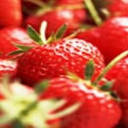
a small soft fruit with small seeds
—
grandstand
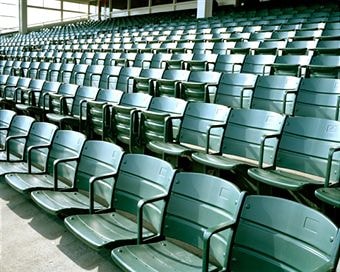
a large structure that has many rows of seats where people sit and watch sports competitions, games, or races
—
breed (n)
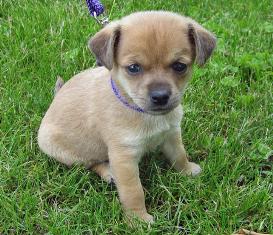
a type of animal that is kept as a pet or on a farm
breed of
Spaniels are my favourite breed of dog.
—
breed (v)
—
contest
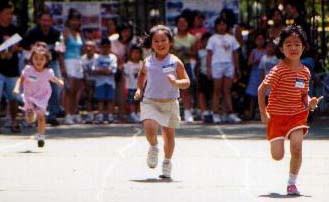
a competition or a situation in which two or more people or groups are competing with each other
contest for
the bitter contest for the Republican presidential nomination
Stone decided to hold a contest to see who could write the best song.
I only entered the contest for fun.
It is clear that the election will be a close contest .
contest between/against
the 1960 contest between Kennedy and Nixon
the 1975 Liberal leadership contest
—
ribbon
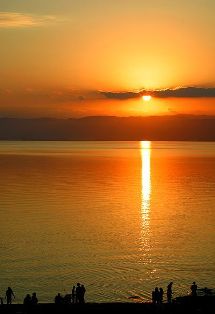
▶PRIZE◀
[countable] American English a length of coloured ribbon, sometimes arranged in the form of a flat flower, that is given as a prize in a competition
British Equivalent: rosette For the second time she won the blue ribbon (=first prize) .
—
fairness
—
midway
—
roller coaster
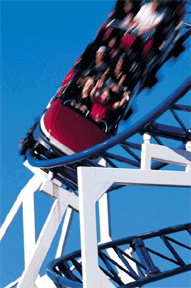
a track with very steep slopes and curves, which people ride on in small carriages at fairs and amusement parks
—
hoop

a large ring that children used to play with in the past, or that circus animals are made to jump through
—
heritage
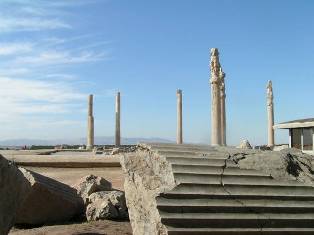
the traditional beliefs, values, customs etc of a family, country, or society
ᅳsee also inheritance
the importance of preserving the national heritage
beautiful old buildings which are part of our heritage
cultural/architectural/literary etc heritage
the cultural heritage of Italy
Persepolice is part of our national heritage
the war left nothing but a heritage of poverty and destruction
our cultural heritage